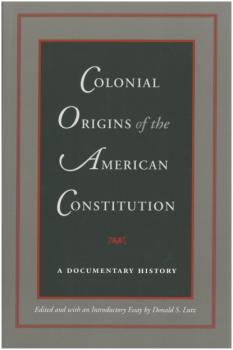Группа авторов
Список книг автора Группа авторовVoices of Women in AA
From Grapevine , the international journal of Alcoholics Anonymous, find inspiration from generations of courageous women devoted to sobriety and wellness. Spanning the decades from the 1950s to the dawn of the 21st century, the editors of Grapevine have collected 61 personal stories, articles, and anecdotes by or about women who contributed to AA early in its history. Covering a wide range of topics, including spirituality, sponsorship, life changes, relationships, family, careers and friendships, this unique and moving collection concludes with a chapter devoted to the power and comfort of women's meetings. Voices of Women in AA demonstrates the diverse ways that women dealing with alcoholism find sobriety in Alcoholics Anonymous and live rich and rewarding lives.
AA in the Military
From Grapevine , the international journal of Alcoholics Anonymous, powerful stories by AA members currently serving or who have served in the military. When it was first published in 1944, AA Grapevine caught on immediately as a way to connect soldiers in isolated military bases round the world who thought of the magazine as “AA’s meeting in print.” This powerful collection of personal accounts by members of Alcoholics Anonymous illustrates the challenges alcoholics in uniform encounter while under stress and far away from home. Filled with stories of experience, strength and hope by the men and women who have served their country on land, at sea and by air, and including a poignant selection of stories contributed by sober veterans titled “Coming Home,” AA in the Military is the perfect read for current members of the armed forces, military veterans, and those who support them.
One Big Tent
From Grapevine , the international journal of Alcoholics Anonymous, stories that reflect the shared experience of secular AA members Atheists, agnostics, nonbelievers and secular alcoholics have been members of AA since its earliest days, making significant contributions to the development of the program. But for some, finding their path has not always been easy. One Big Tent is a collection of stories originally published in Grapevine which represent the shared experience of secular AA members who have struggled with alcoholism, yet ultimately found a common solution and a welcoming community in Alcoholics Anonymous. From working through initial reservations about the spiritual aspects of recovery to ultimately finding one’s place within the Fellowship, members of diverse backgrounds—and with diverse beliefs—share how the program works for them, how they find value by engaging in service, and speak of the joy of sponsoring others in their recovery.
Take Me To Your Sponsor
A collection of the best cartoons from the pages of Grapevine magazine, the international journal of Alcoholics Anonymous Sobriety can be tough sometimes, which is why recovering alcoholics can always use a good laugh. From dealing with meetings, sponsorship, dating and marriage, friends and coworkers, so-called character defects, and more, Take Me to Your Sponsor: Best Jokes & Cartoons from AA Grapevine offers a humorous take on AA. Contributed to the “At Wit’s End” column of Grapevine, and drawn by AA members, these clever and amusing black-and-white cartoons will leave readers with the feeling that they are not alone—and that it’s very okay to appreciate the lighter side of recovery. Take Me to Your Sponsor should brighten your day and give you some hearty, well-earned chuckles.
Лабиринты
Хорошенько разомни свои извилины, ведь впереди тебя ждут незабываемые часы в самых необычных лабиринтах. Сможешь пройти все? Включай свой мозг на полную! Вперёд – найди выход!
Единорожки
Если тебе под силу оседлать радугу, то ты с удовольствием пройдёшь все лабиринты, раскрасишь по числам и нарисуешь магических существ, найдёшь все-превсе отличия и соединишь точки в мире чудесных единорожек! Хорошенько разомни свои извилины, ведь впереди тебя ждёт встреча с самыми милыми и обаятельными магическими созданиями. Помоги единорожкам пройти все задания – включай свой мозг на полную! Вперёд – за радугой!
Динозаврики
Хорошенько разомни свои извилины, ведь впереди тебя ждёт встреча с порой очень грозными и опасными, но временами милыми и дружелюбными доисторическими существами. Соверши путешествие во времени и включай свой мозг на полную! Вперёд – сквозь века!
Как нарисовать 100 картинок: шаг за шагом. Для девочек
В замечательной книжке «Как нарисовать 100 картинок: шаг за шагом. Для девочек» – коллекция пошаговых рисовалок. Интересные занятия развивают мелкую моторику, мышление, память, внимание и воображение. С нашей книжкой можно научиться рисовать овощи, фрукты, цветы, человечков, домики, игрушки, зверей и всё на свете. Маленькая художница сможет удивить всех необычными рисунками, которые сделала сама! Для дошкольного и младшего школьного возраста.
The Crisis
The Crisis was a London weekly published between January 1775 and October 1776. It was the longest-running weekly pamphlet series printed in the British Atlantic world during those years, and it used unusually bold, pithy language. Neither the longevity of the effort nor the colorful language employed would be reason enough to collect and print all ninety-two issues under one cover in a modern edition. The Crisis lays claim to our attention because of its place in the rise of freedom of the press, its self-conscious attempt to create a transatlantic community of protest, and its targeting of the king as the source of political problems—but without attacking the institution of monarchy itself.The Crisis was condemned informally by leaders in the British government, and then formally in court, as a dangerous example of seditious libel. Copies of it were publicly burned, and yet publication continued uninterrupted. The men behind The Crisis were determined to interest the British public in American affairs and were no doubt pleased when various issues were reprinted in the colonies. They played on shared beliefs and shared fears: beliefs in the existence of fundamental rights, rights beyond the reach of any government, and the fear that loss of those rights in Britain’s American colonies could lead to their loss in Britain itself. They denounced George III in language at once harsh and florid, and did so many months before Thomas Paine’s Common Sense. Even so, The Crisis did not call on Britons to overthrow monarchy with a republic, and its ardor for the Patriot cause cooled once Revolutionary Americans declared their independence. It stands as proof that strident rhetoric does not necessarily lead to radical political action. Its history also shows that ideas, once unleashed, take on a life of their own.Neil L. York is professor of history at Brigham Young University. He is the author or editor of a dozen books, including, most recently, The American Revolution, 1760–1790: New Nation as New Empire.
Colonial Origins of the American Constitution
This landmark collection of eighty documents created by the American colonists—and not English officials—is the genesis of American fundamental law and constitutionalism. Included are all documents attempting to unite the colonies, beginning with the New England Confederation of 1643.Donald S. Lutz is Professor of Political Science at the University of Houston. Please note: This title is available as an ebook for purchase on Amazon, Barnes and Noble, and iTunes.









